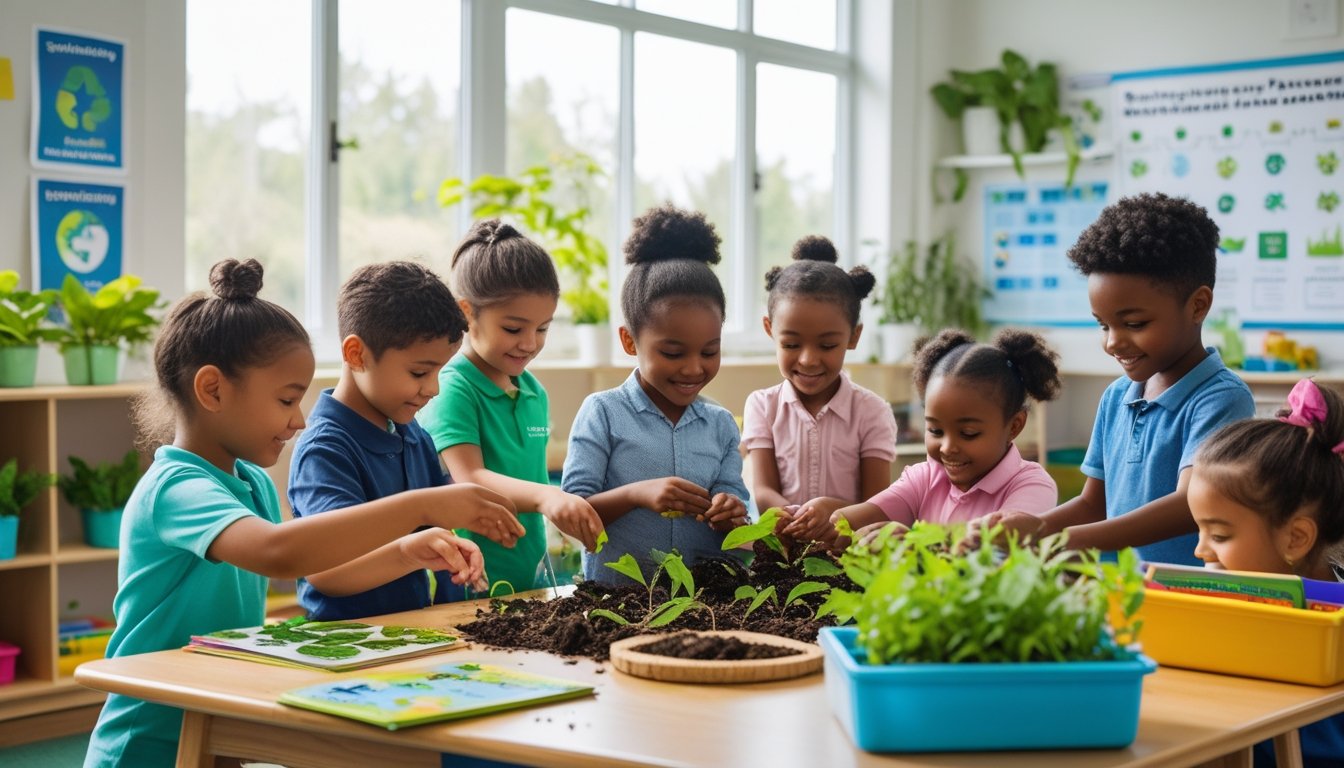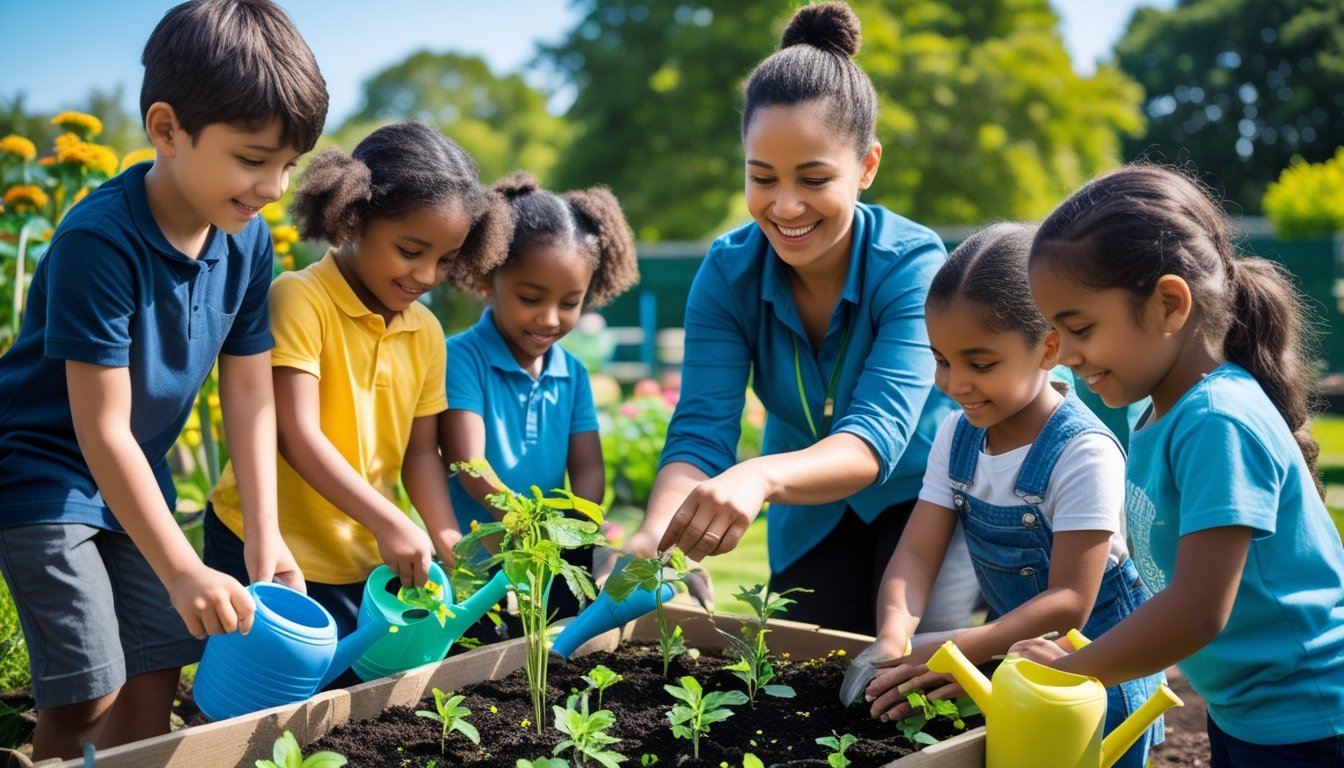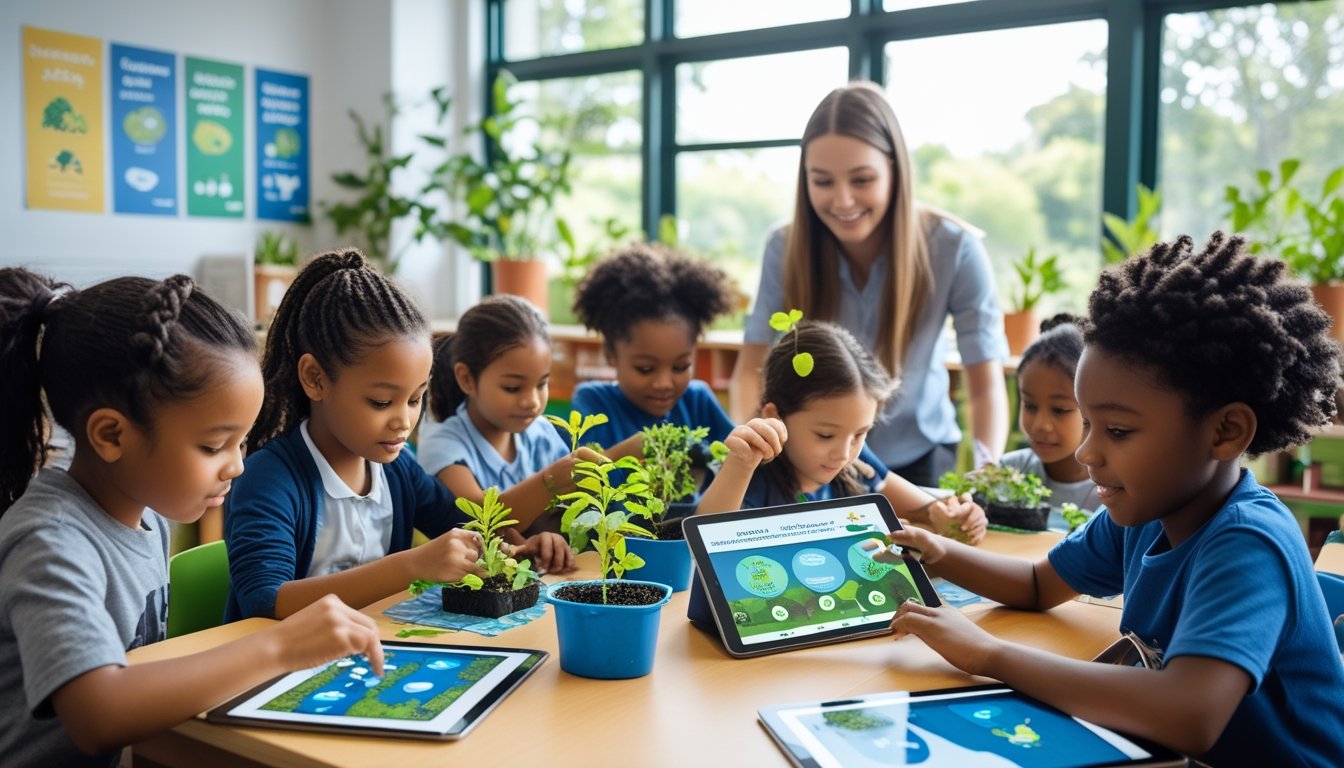Late updated: 19 Oct 2025 09:10
Written by:
Exploring Sustainable Learning Practices for Children: Innovative Approaches
Exploring sustainable learning practices for children is an essential step in shaping the future. As we look to nurture a generation that is environmentally aware and proactive, the foundation must begin with education that prioritises sustainability. Incorporating these values at a young age helps children grow into responsible stewards of the planet.

By integrating sustainability into early education, we not only promote environmental stewardship but also instil important life lessons about responsibility and conservation. This approach enhances holistic development, fostering empathy and awareness in young learners. Sustainable practices are crucial for instilling a sense of responsibility towards the environment and society.
Our role in this endeavour is to provide children with hands-on experiences that connect them to the natural world. Sustainable learning practices not only engage children but also empower them to be catalysts for change. Join us as we delve into the core principles and practical approaches to embedding sustainable practices in children's education.
Key Takeaways
- Sustainable learning is vital for future generations.
- Early education enhances responsibility and empathy.
- Practical experiences empower change.
Core Principles Of Sustainable Learning For Children
Sustainable learning for children involves integrating foundational concepts at an early stage. Our focus must be on fostering a deep understanding of sustainability, promoting environmental awareness, and embedding principles of sustainable development into early childhood education (ECE).
Understanding Sustainability Concepts At An Early Age
Children have a remarkable capacity to grasp foundational ideas about the world. Introducing sustainability concepts when they are young sets the stage for a lifetime of responsible living. In ECE settings, we can use play-based learning to explore how actions impact the environment. Through interactive activities, children learn about concepts such as recycling and conservation in a hands-on manner. This early understanding aids in developing critical thinking about resource use and personal responsibility.
Play-based discovery is key. For instance, exploring the life cycles of plants through gardening helps children see interconnections within ecosystems. As educators, let's create environments that reflect these principles: using natural materials and encouraging children to observe how their everyday actions impact the planet.
Promoting Environmental Awareness In Childhood
Environmental awareness for children forms the foundation of a sustainable future. To foster this, we must integrate sustainability education into regular activities beyond theoretical teaching. This includes experiences like nature walks and storytelling that evoke a sense of curiosity and connection with the natural world. It's crucial for us to guide children in making personal connections with their surroundings.
We can strengthen environmental education by involving children in activities like recycling or composting. Through these, children learn practical steps to contribute positively to the environment. Furthermore, storytelling about environmental issues through age-appropriate narratives can help bridge the gap between abstract concepts and everyday experiences.
Sustainable Development In Early Childhood Education
Integrating principles of sustainable development in early childhood education is essential. ECE programs should promote a holistic view that includes environmental, social, and economic dimensions. By embedding these aspects, we prepare children to think globally and act locally, nurturing future environmental stewards.
In practical terms, sustainable learning spaces are transformative. Creating gardens or composting areas allows children to witness nature's cycles. Similarly, collaborative projects can help them appreciate community dynamics and the importance of sustainable practices. Our aim is to reinforce the UN Sustainable Development Goals, ensuring inclusive education that fosters both individual and communal growth.
Practical Approaches To Embedding Sustainable Practices

Embedding sustainable practices into children's learning involves practical, engaging methods that encourage eco-friendly habits. By using hands-on activities and fostering interactive experiences, we aim to instil a deep-rooted understanding of resource conservation, waste reduction, and sustainable living. Our focus is on creating meaningful interactions that connect children with the environment in tangible ways.
Teaching Sustainability Through Hands-On Activities
Hands-on activities are a powerful way to teach sustainability. Interactive projects like school gardening and composting allow pupils to experience the benefits of sustainable practices first-hand. Gardening teaches children about plant life cycles, the importance of biodiversity, and organic food production.
Composting enables them to see the transformation of waste into valuable nutrients for soil. This approach makes abstract concepts more relatable and emphasises the impact of sustainability on everyday life. Such activities not only broaden their environmental knowledge but also cultivate a sense of responsibility and ownership over their actions.
Encouraging Sustainable Habits And Resource Conservation
Instilling sustainable habits in children starts with awareness and simple daily actions. We focus on demonstrating resource conservation by showcasing practical methods to reduce water and energy use. For example, teaching pupils to turn off taps and lights when not in use ingrains essential conservation principles.
Storytelling and role-playing can be used to highlight the global impact of these actions, illustrating how small changes contribute to larger environmental outcomes. Encouraging a mindful approach to consumption reinforces the significance of individual actions in the fight against climate change.
Integrating Waste Reduction And Management Strategies
Effective waste management is crucial in teaching children the value of recycling and reduction. We explore various waste reduction strategies through engaging workshops and activities, facilitating discussions on the importance of managing surplus materials. Creating art projects from recyclable items is an effective method to emphasise the potential of reusing materials.
Another strategy includes waste audits, where children examine their waste production and develop ideas to decrease it. By engaging in these practical exercises, they learn to distinguish between types of waste and the benefits of reducing, reusing, and recycling.
Fostering Interactive Learning Experiences For A Sustainable Future
Interactive learning provides a dynamic environment for children to explore sustainability concepts in depth. We use technology-enhanced learning tools, such as interactive simulations and online games, to depict the environmental impact of everyday choices. These tools offer a vivid illustration of the real-world effects of sustainable practices.
Collaborative projects also encourage children to work together, fostering a sense of community and shared responsibility. Peer-to-peer learning, through group projects and sustainability challenges, inspires creativity and collective problem solving, preparing them to be proactive stewards of the environment. Such interactive methods are key to nurturing an informed and engaged generation prepared to address future ecological challenges.
Frequently Asked Questions

In exploring sustainable learning practices for children, several important questions arise. We address effective integration methods and assessment strategies, as well as community involvement, curriculum design, technology integration, and the role of outdoor activities.
What are the most effective methods to integrate environmental education into early childhood learning?
It's crucial to incorporate sustainability into daily routines and play-based learning. By utilising storytelling, art, and nature exploration, we make learning engaging and memorable for young minds. Including real-world examples and hands-on activities can help children understand the relevance and importance of protecting our environment.
How can we measure the impact of sustainable learning practices on children’s development?
To assess the effect of these practices, we can observe behavioural changes, such as increased empathy towards nature and proactive resource conservation. Regular feedback from children, parents, and teachers, coupled with tools like developmental checklists, can provide insights into children's learning and comprehension of environmental concepts.
In what ways can schools involve parents and the local community in promoting sustainability education?
Schools can organise workshops and events that engage families and community members in sustainability initiatives. Collaborating on projects such as community gardens, recycling drives, and sustainability fairs foster a collective effort and reinforces the values children learn in the classroom.
What are the core principles for designing a child-centred sustainability curriculum?
A sustainability curriculum for children should be adaptable, experiential, and inclusive. Focusing on active participation and inquiry-based learning encourages children to explore and question. Core principles should include fostering curiosity, promoting problem-solving skills, and developing a sense of responsibility towards the environment.
How can technology be harnessed to enhance sustainable learning among young students?
Digital applications and virtual reality experiences offer interactive and immersive ways to learn about sustainability. By integrating technology, we can create engaging content that brings various environmental issues to life. Online platforms can also offer resources and community for collaboration between schools worldwide.
What role do outdoor activities play in fostering a deeper understanding of sustainability for children?
Outdoor activities provide experiential learning opportunities that enrich children's understanding of ecosystems and environmental stewardship. By engaging in activities like gardening, nature walks, and wildlife observation, children develop a connection to nature. This hands-on experience is vital in building their appreciation and respect for the natural world.
